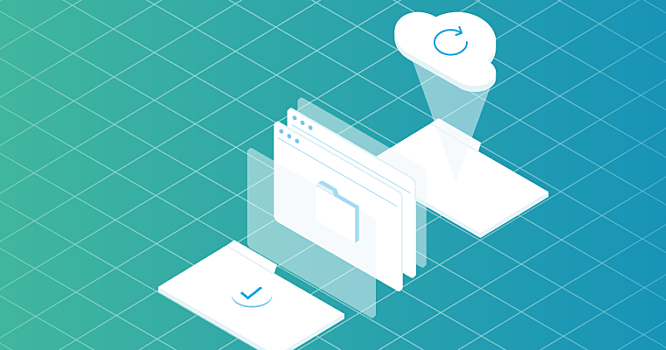How to Create a Foolproof Backup Strategy: Safeguarding Your Digital Life

In an era dominated by digital dependency, safeguarding your valuable data is more critical than ever. A comprehensive and foolproof backup strategy is the key to protecting your digital life from unforeseen events such as hardware failures, accidental deletions, or cybersecurity threats. This extensive guide aims to empower users with the knowledge and tools needed to create a robust backup strategy that ensures the safety and accessibility of their important data.
I. Understanding the Importance of Backup
A. The Vulnerability of Digital Data
Acknowledge the inherent vulnerabilities of digital data, including the risk of hardware failures, data corruption, accidental deletions, and cybersecurity threats. Recognizing these risks is the first step toward building an effective backup strategy.
B. The Consequences of Data Loss
Explore the potential consequences of data loss, ranging from the inconvenience of re-creating lost files to the devastating impact on personal and professional aspects of life. Understanding the stakes reinforces the importance of a proactive backup approach.
II. Types of Data to Back Up
A. Personal Documents and Photos
Identify and prioritize personal documents, photos, and videos that hold sentimental value or are irreplaceable. These items often constitute the core of an individual’s digital life.
B. Work and Business Documents
For professionals and business owners, critical work documents, financial records, and other business-related data should be safeguarded through regular backups to prevent disruptions and loss.
C. Application and System Settings
Consider backing up application settings and preferences, as well as system configurations. This ensures a seamless recovery process, especially when migrating to a new device or after system reinstallation.
III. Choosing the Right Backup Solutions
A. Local Backup Solutions
- External Hard Drives: Explore the use of external hard drives for local backups. Learn how to create regular backups using built-in backup tools on operating systems like Windows and macOS.
- Network Attached Storage (NAS): Implement a NAS solution for centralized storage accessible over a local network. Understand the benefits of NAS, including shared access and continuous backups.
B. Cloud-Based Backup Solutions
- Cloud Storage Services: Utilize cloud storage services like Google Drive, Dropbox, or OneDrive for convenient and accessible backups. Understand the storage limitations and subscription plans associated with each service.
- Dedicated Backup Services: Consider dedicated backup services such as Backblaze, Carbonite, or Acronis for comprehensive cloud-based backups. Explore features like automatic backups, versioning, and file recovery.
C. Hybrid Backup Approaches
Combine both local and cloud-based backup solutions to create a hybrid approach that leverages the advantages of both. Learn how to synchronize data between local storage and the cloud for added redundancy.
IV. Establishing a Backup Schedule
A. Regularity of Backups
Define a backup schedule based on the frequency of data changes and updates. Explore options for daily, weekly, or monthly backups to ensure that the most recent data is consistently protected.
B. Automation of Backup Processes
Implement automated backup processes to minimize the risk of human error and ensure that backups occur regularly without manual intervention. Explore the automation features provided by backup solutions.
V. Data Encryption and Security
A. Encryption Best Practices
Prioritize data security by implementing encryption measures for both local and cloud-based backups. Understand encryption protocols and best practices to safeguard sensitive information.
B. Two-Factor Authentication (2FA)
Enhance the security of cloud-based backup solutions by enabling two-factor authentication. Learn how to set up 2FA to add an additional layer of protection to your backup accounts.
VI. Periodic Backup Audits and Testing
A. Regular Audits
Conduct periodic audits of your backup strategy to ensure its effectiveness. Review the data being backed up, verify the integrity of backups, and make adjustments based on changes in data priorities.
B. Testing Recovery Processes
Perform regular tests of the recovery processes to confirm that backups are accessible and functional. Simulate scenarios of data loss and practice restoring files to guarantee a smooth recovery experience.
VII. Scalability and Future-Proofing
A. Scalability Considerations
Design a backup strategy that can adapt to changes in data volume and storage needs. Explore scalable solutions that accommodate the growing demands of your digital life.
B. Technological Advances
Stay informed about technological advancements in backup solutions. Embrace new features, protocols, and tools that enhance the efficiency and security of your backup strategy.
VIII. Disaster Recovery Planning
A. Creating a Disaster Recovery Plan
Develop a comprehensive disaster recovery plan that outlines the steps to take in the event of data loss or a catastrophic event. Include contact information, recovery procedures, and a list of critical resources.
B. Off-Site Backup Storage
Consider off-site backup storage options for added protection against physical disasters such as fire, floods, or theft. Explore secure off-site storage facilities or use a combination of local and cloud-based solutions.
IX. Educating and Involving Others
A. Family and Collaborators
Extend your backup strategy to involve family members or collaborators. Educate them about the importance of backups and ensure that everyone follows best practices to protect shared data.
B. Training and Support
Provide training and support to less tech-savvy individuals in your network. Share knowledge about backup tools, recovery processes, and security measures to empower others in safeguarding their digital lives.
X. Conclusion
Creating a foolproof backup strategy is an investment in the longevity and resilience of your digital life. By understanding the risks, choosing the right solutions, and implementing best practices, you can safeguard your data against unforeseen events. This comprehensive guide serves as a roadmap for individuals and businesses seeking to fortify their digital resilience. Take proactive steps today to secure your digital legacy and enjoy peace of mind knowing that your valuable data is protected against the uncertainties of the digital world.




